-
 Bitcoin
Bitcoin $108,489.6704
1.13% -
 Ethereum
Ethereum $2,502.0528
2.92% -
 Tether USDt
Tether USDt $1.0002
0.00% -
 XRP
XRP $2.1941
0.51% -
 BNB
BNB $655.3375
1.00% -
 Solana
Solana $151.5977
1.27% -
 USDC
USDC $0.9999
0.00% -
 TRON
TRON $0.2768
0.32% -
 Dogecoin
Dogecoin $0.1676
2.86% -
 Cardano
Cardano $0.5675
0.98% -
 Hyperliquid
Hyperliquid $40.6109
7.48% -
 Bitcoin Cash
Bitcoin Cash $500.7746
2.09% -
 Sui
Sui $2.8328
2.03% -
 Chainlink
Chainlink $13.4452
1.26% -
 UNUS SED LEO
UNUS SED LEO $9.1623
0.39% -
 Avalanche
Avalanche $18.2267
2.24% -
 Stellar
Stellar $0.2382
0.00% -
 Toncoin
Toncoin $2.8885
1.68% -
 Shiba Inu
Shiba Inu $0.0...01159
0.91% -
 Litecoin
Litecoin $87.1827
0.88% -
 Hedera
Hedera $0.1511
2.90% -
 Monero
Monero $315.4992
-0.59% -
 Polkadot
Polkadot $3.4663
2.34% -
 Bitget Token
Bitget Token $4.6118
-0.65% -
 Dai
Dai $1.0000
-0.01% -
 Ethena USDe
Ethena USDe $1.0003
0.02% -
 Uniswap
Uniswap $7.2989
4.69% -
 Pepe
Pepe $0.0...01003
5.73% -
 Aave
Aave $275.5616
7.15% -
 Pi
Pi $0.5181
-2.49%
Is the slow rise of continuous small positive lines at low levels a signal of the main force absorbing funds?
A slow rise in small green candles at low levels may signal institutional accumulation, suggesting growing buying pressure ahead of a potential breakout.
Jun 30, 2025 at 07:00 pm
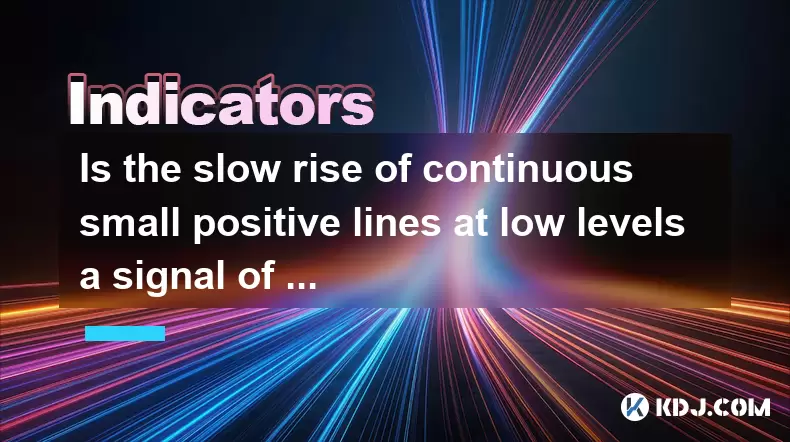
Understanding the Concept of Continuous Small Positive Lines in Cryptocurrency
In the realm of cryptocurrency trading, price patterns are often analyzed to predict future movements. One such pattern is the slow rise of continuous small positive lines at low levels, which refers to a situation where an asset’s price gradually increases over time through a series of minor upward candlesticks on the chart. These candlesticks typically appear after a significant downtrend or during a consolidation phase.
This phenomenon may indicate that buying pressure is slowly increasing, but not enough to cause a sharp rally. Traders and analysts often interpret this as a potential sign of accumulation by larger market participants — sometimes referred to as the "main force" or institutional investors.
What Does Accumulation Mean in Crypto Markets?
Accumulation occurs when large entities start buying assets quietly without causing a noticeable price surge. In the crypto space, where markets can be highly volatile and sensitive to large trades, whales or institutional players often break down their orders into smaller chunks to avoid detection.
When you observe a slow rise with small green candles at low levels, it could suggest that these big players are absorbing available sell orders. This behavior is usually done during a period of market uncertainty or after a strong bearish trend has exhausted most selling pressure.
Key signs of accumulation include:
- Low volatility
- Frequent small gains
- Volume remains stable or slightly rising
- Price fails to fall below a certain level repeatedly
How to Confirm Whether It's Institutional Buying or Random Movement
It is crucial to differentiate between genuine accumulation and random price movement. Several technical indicators and tools can help identify whether the main force is indeed absorbing funds:
- Volume Profile: A spike in volume at specific price levels indicates interest from large buyers.
- Order Book Analysis: Observing large limit buy orders resting in the order book suggests strategic accumulation.
- On-chain Metrics: Tools like Glassnode or Santiment can reveal whale activity through metrics such as large transfer counts or exchange inflows/outflows.
- Depth Charts: A thick bid wall compared to ask wall implies stronger buying pressure.
Traders should cross-reference multiple data sources before concluding that institutional players are behind the slow uptick.
Identifying Key Support Levels During Consolidation
During a phase where small positive lines dominate the chart at low levels, support zones become critical. These are price points where the asset has historically found demand. If the price repeatedly bounces off the same zone without breaking lower, it signals that buyers are active.
To locate these support levels:
- Draw horizontal lines at previous swing lows
- Use Fibonacci retracement tools
- Monitor moving averages like the 50 or 200-day MA
If the price action shows resilience near these areas while maintaining a gradual upward trajectory, it supports the theory that larger players are accumulating.
Examining On-Chain Behavior for Signs of Whale Activity
Beyond chart patterns, on-chain analytics offer deeper insights into whether the main force is absorbing funds. By analyzing blockchain data, traders can detect unusual behavior that precedes major moves.
Look for:
- Large wallet inflows from exchanges
- Decreased supply on exchanges
- Increased number of large transactions
- Rise in newly created wallets with substantial balances
These indicators may confirm that whales are shifting funds off exchanges, suggesting they're preparing for a potential move higher. When combined with the earlier mentioned slow rise of small green candles, the case for accumulation becomes stronger.
Trading Strategies Based on This Pattern
For retail traders, recognizing this gradual build-up of positive momentum can provide early entry opportunities before a potential breakout. However, caution is advised due to the speculative nature of crypto markets.
Some strategies include:
- Dollar-cost averaging into the position as the price consolidates
- Placing buy orders just above confirmed support levels
- Monitoring volume spikes for confirmation of a breakout
- Using trailing stop-losses once the price starts accelerating
Timing entries correctly requires patience and discipline. Entering too early might result in temporary losses, while waiting too long could mean missing the initial wave of a rally.
Frequently Asked Questions (FAQ)
Q: What does it mean if a cryptocurrency shows many small green candles but no significant rally?
A: This often indicates that buying pressure is present but controlled. It may reflect accumulation by large players who want to avoid triggering a rapid price increase.
Q: Can retail traders effectively spot accumulation patterns in real-time?
A: While challenging, retail traders can use a combination of volume analysis, order book observation, and on-chain metrics to assess accumulation activities.
Q: How long can the accumulation phase last in a cryptocurrency?
A: There’s no fixed duration; it depends on the size of the entity accumulating and market conditions. Some assets consolidate for days, others for weeks before a meaningful move occurs.
Q: Are all slow rises at low levels indicative of institutional buying?
A: No. Sometimes it's due to automated trading bots or minor retail participation. Proper confirmation using volume, order flow, and on-chain data is necessary to determine true accumulation.
Disclaimer:info@kdj.com
The information provided is not trading advice. kdj.com does not assume any responsibility for any investments made based on the information provided in this article. Cryptocurrencies are highly volatile and it is highly recommended that you invest with caution after thorough research!
If you believe that the content used on this website infringes your copyright, please contact us immediately (info@kdj.com) and we will delete it promptly.
- Unlock Crypto Riches: Mining Platforms & Starter Bonuses - Your Gateway to Digital Gold!
- 2025-06-30 22:30:11
- Dogecoin, Cloud Mining, and Risk Alerts: Navigating the Meme Minefield
- 2025-06-30 22:30:11
- Ric Edelman's Bold Crypto Allocation: A Financial Advisor's Perspective
- 2025-06-30 22:50:12
- Bitcoin Layer-2 Presale Heats Up: Is HYPER the Next Big Thing?
- 2025-06-30 22:50:12
- Bitcoin's Bull Run: Network Activity Tells a Different Story
- 2025-06-30 22:55:12
- SpacePay, Altcoins & Investing in 2025: What's the Buzz?
- 2025-06-30 23:10:12
Related knowledge
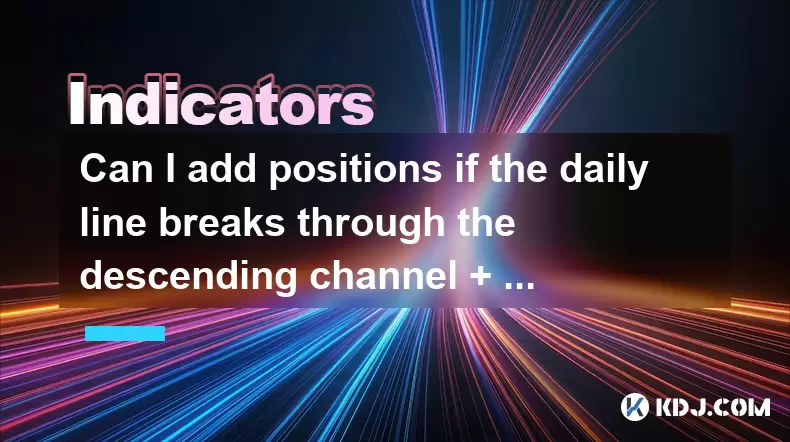
Can I add positions if the daily line breaks through the descending channel + the 30-minute moving average is in a bullish arrangement?
Jun 30,2025 at 11:00pm
Understanding the Descending Channel BreakoutWhen a daily line breaks through a descending channel, it indicates a potential shift in market sentiment from bearish to bullish. A descending channel is formed by drawing two parallel trendlines, where the upper trendline connects the lower highs and the lower trendline connects the lower lows. A breakout o...
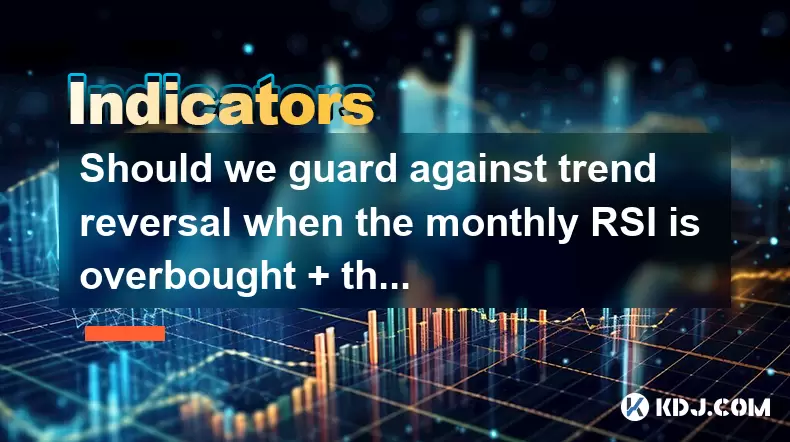
Should we guard against trend reversal when the monthly RSI is overbought + the weekly line has a long upper shadow?
Jun 30,2025 at 11:35pm
Understanding RSI Overbought Conditions in CryptocurrencyThe Relative Strength Index (RSI) is a momentum oscillator commonly used in technical analysis to identify overbought or oversold conditions in an asset. When the monthly RSI of a cryptocurrency reaches above 70, it is generally considered overbought, suggesting that the asset may be due for a pul...
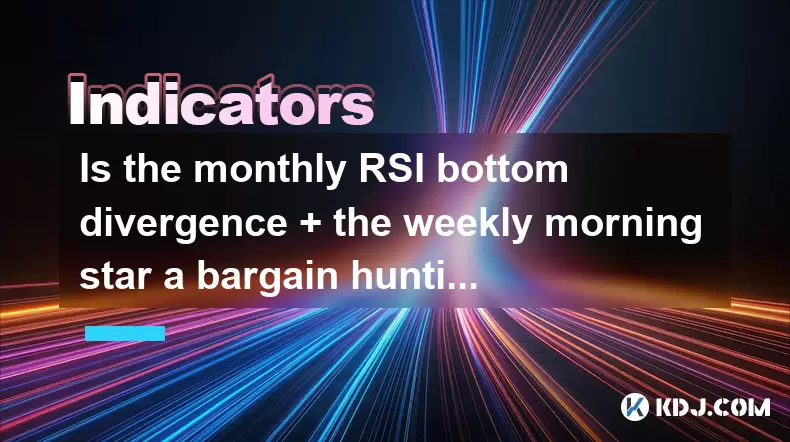
Is the monthly RSI bottom divergence + the weekly morning star a bargain hunting opportunity?
Jun 30,2025 at 09:57pm
Understanding RSI Bottom Divergence in Monthly TimeframesThe Relative Strength Index (RSI) is a momentum oscillator commonly used to identify overbought or oversold conditions in the market. When traders refer to a monthly RSI bottom divergence, they're observing a situation where the price makes a lower low, but the RSI makes a higher low on the monthl...
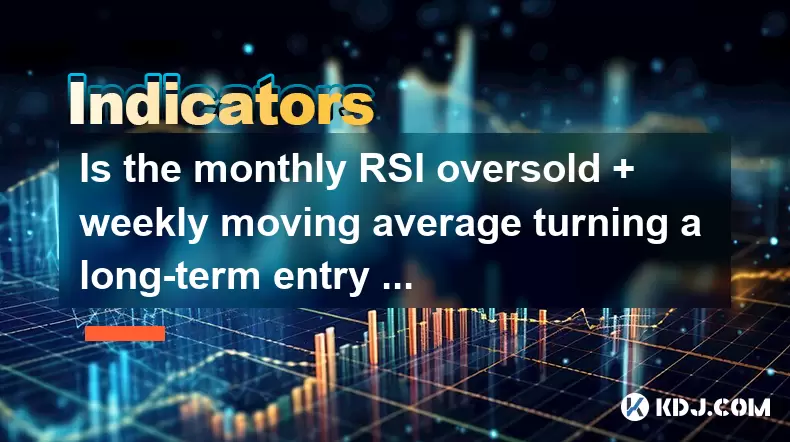
Is the monthly RSI oversold + weekly moving average turning a long-term entry signal?
Jun 30,2025 at 11:42pm
Understanding RSI and Its Role in Cryptocurrency TradingThe Relative Strength Index (RSI) is a momentum oscillator commonly used by traders to identify overbought or oversold conditions in the market. In the context of cryptocurrency, where volatility reigns supreme, understanding how RSI behaves on different timeframes becomes crucial. When the monthly...
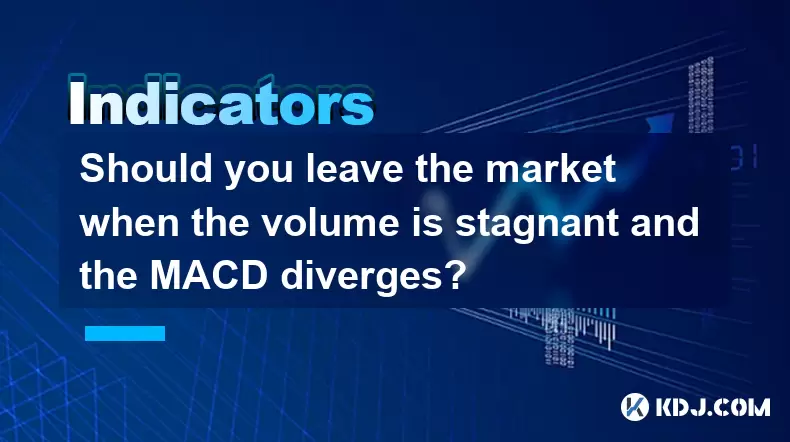
Should you leave the market when the volume is stagnant and the MACD diverges?
Jun 30,2025 at 09:36pm
Understanding Volume Stagnation in Cryptocurrency TradingIn the realm of cryptocurrency trading, volume plays a crucial role in determining the strength of price movements. When volume remains stagnant over an extended period, it suggests that neither buyers nor sellers are showing strong conviction. This often leads to sideways movement or consolidatio...
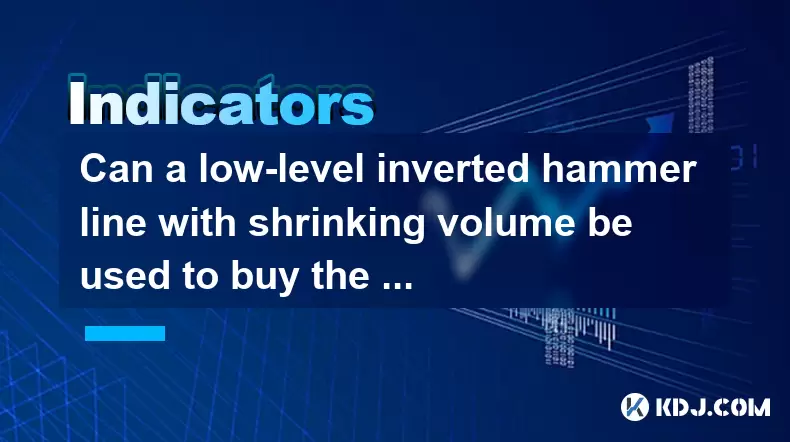
Can a low-level inverted hammer line with shrinking volume be used to buy the bottom?
Jul 01,2025 at 12:08am
Understanding the Low-Level Inverted Hammer LineA low-level inverted hammer line is a candlestick pattern that typically appears at the bottom of a downtrend. It consists of a small real body near the top of the trading range with a long upper shadow and little or no lower shadow. This formation suggests that buyers attempted to push prices higher but w...

Can I add positions if the daily line breaks through the descending channel + the 30-minute moving average is in a bullish arrangement?
Jun 30,2025 at 11:00pm
Understanding the Descending Channel BreakoutWhen a daily line breaks through a descending channel, it indicates a potential shift in market sentiment from bearish to bullish. A descending channel is formed by drawing two parallel trendlines, where the upper trendline connects the lower highs and the lower trendline connects the lower lows. A breakout o...

Should we guard against trend reversal when the monthly RSI is overbought + the weekly line has a long upper shadow?
Jun 30,2025 at 11:35pm
Understanding RSI Overbought Conditions in CryptocurrencyThe Relative Strength Index (RSI) is a momentum oscillator commonly used in technical analysis to identify overbought or oversold conditions in an asset. When the monthly RSI of a cryptocurrency reaches above 70, it is generally considered overbought, suggesting that the asset may be due for a pul...

Is the monthly RSI bottom divergence + the weekly morning star a bargain hunting opportunity?
Jun 30,2025 at 09:57pm
Understanding RSI Bottom Divergence in Monthly TimeframesThe Relative Strength Index (RSI) is a momentum oscillator commonly used to identify overbought or oversold conditions in the market. When traders refer to a monthly RSI bottom divergence, they're observing a situation where the price makes a lower low, but the RSI makes a higher low on the monthl...

Is the monthly RSI oversold + weekly moving average turning a long-term entry signal?
Jun 30,2025 at 11:42pm
Understanding RSI and Its Role in Cryptocurrency TradingThe Relative Strength Index (RSI) is a momentum oscillator commonly used by traders to identify overbought or oversold conditions in the market. In the context of cryptocurrency, where volatility reigns supreme, understanding how RSI behaves on different timeframes becomes crucial. When the monthly...

Should you leave the market when the volume is stagnant and the MACD diverges?
Jun 30,2025 at 09:36pm
Understanding Volume Stagnation in Cryptocurrency TradingIn the realm of cryptocurrency trading, volume plays a crucial role in determining the strength of price movements. When volume remains stagnant over an extended period, it suggests that neither buyers nor sellers are showing strong conviction. This often leads to sideways movement or consolidatio...

Can a low-level inverted hammer line with shrinking volume be used to buy the bottom?
Jul 01,2025 at 12:08am
Understanding the Low-Level Inverted Hammer LineA low-level inverted hammer line is a candlestick pattern that typically appears at the bottom of a downtrend. It consists of a small real body near the top of the trading range with a long upper shadow and little or no lower shadow. This formation suggests that buyers attempted to push prices higher but w...
See all articles

























































































